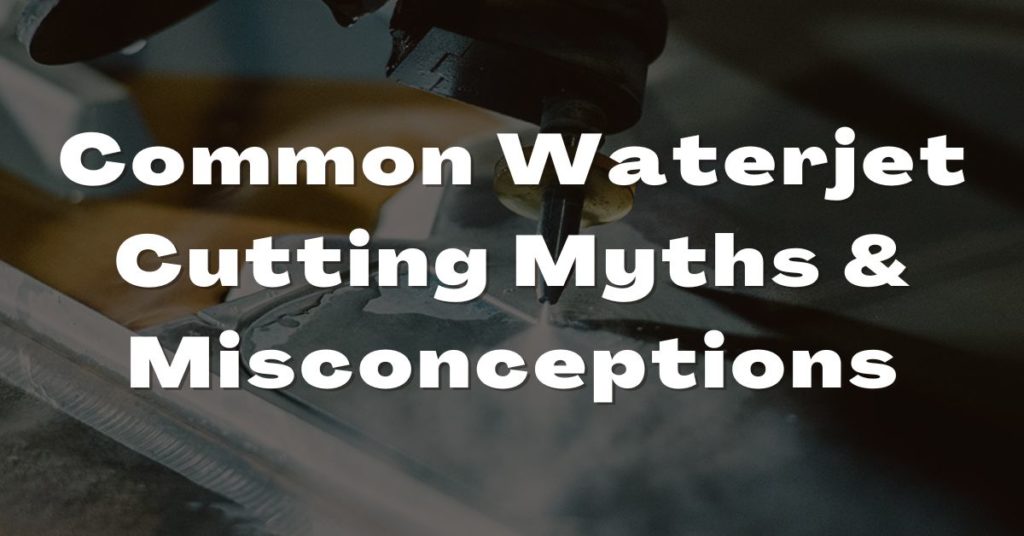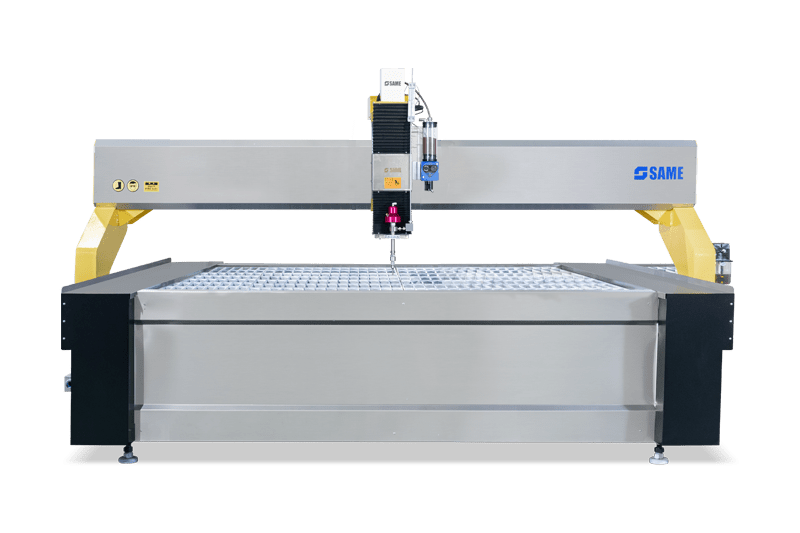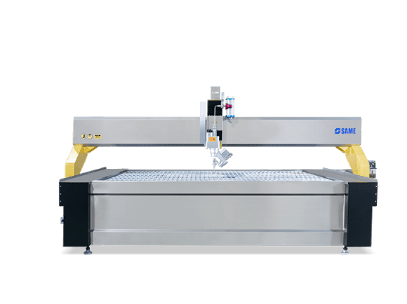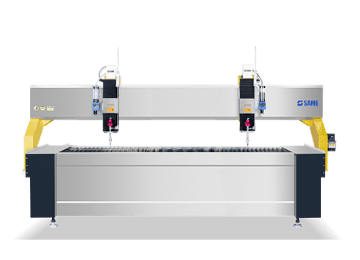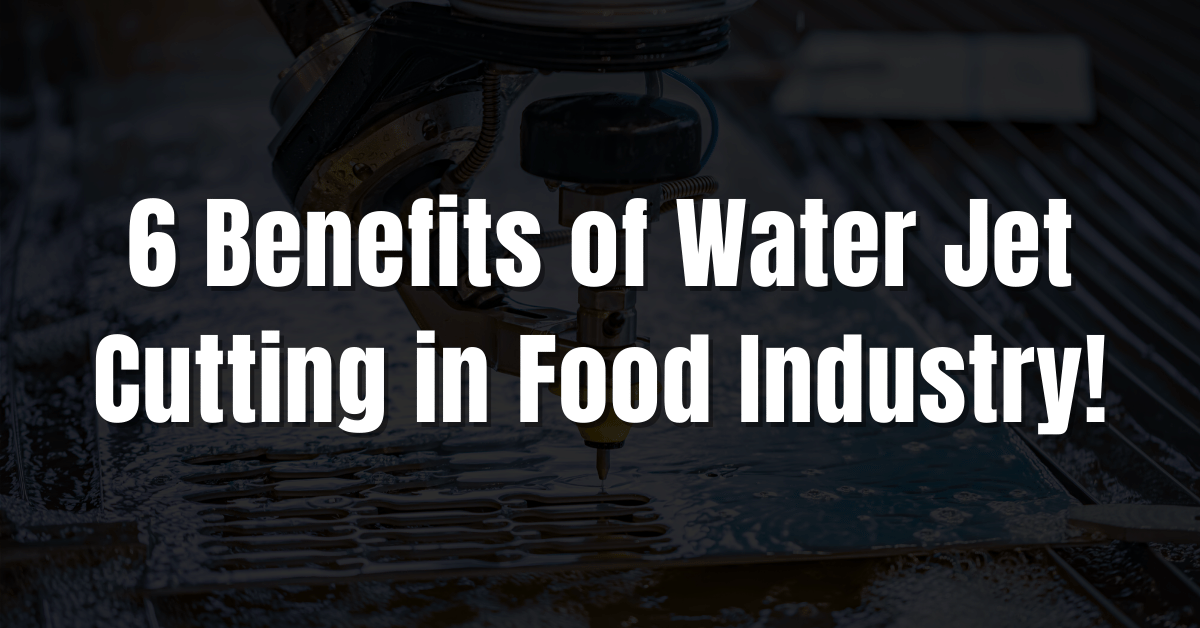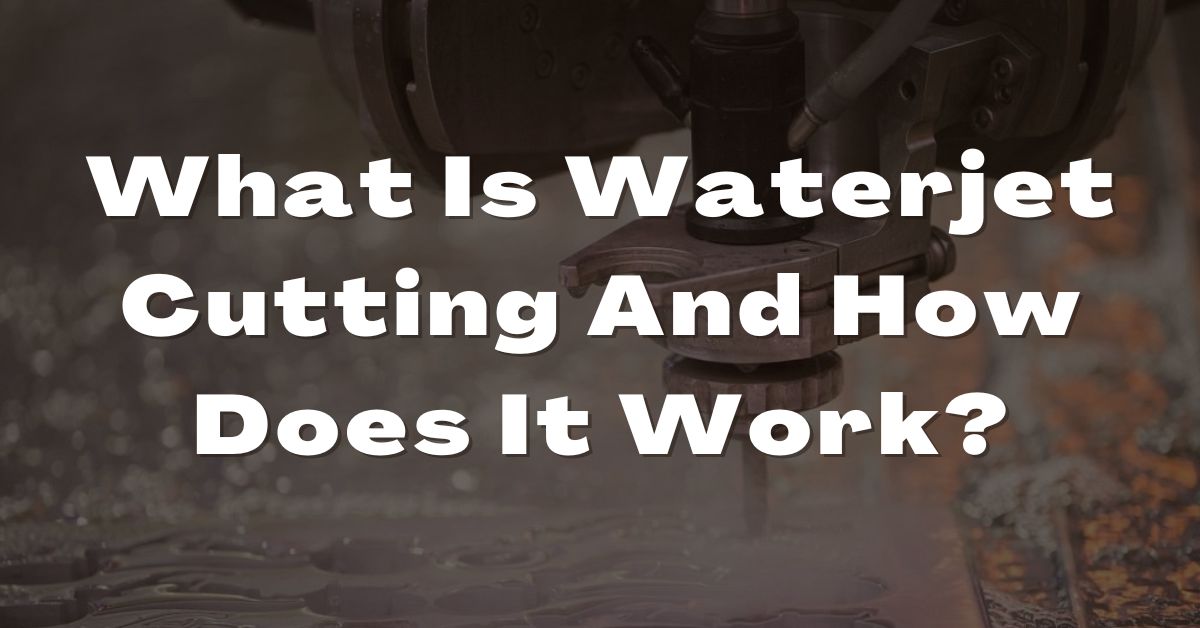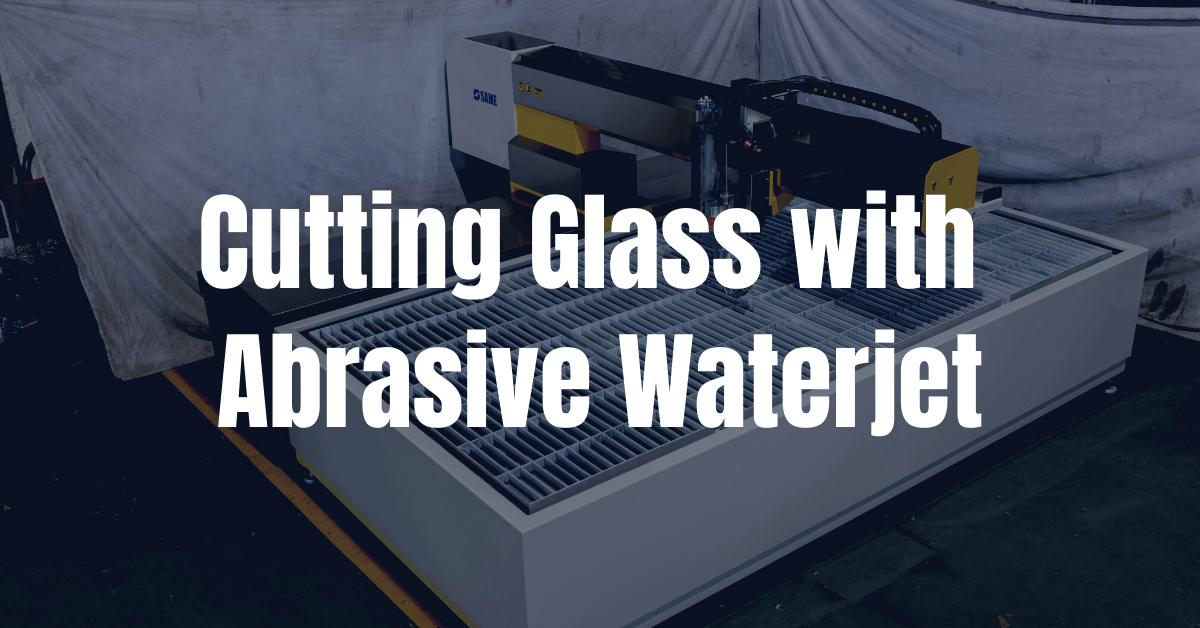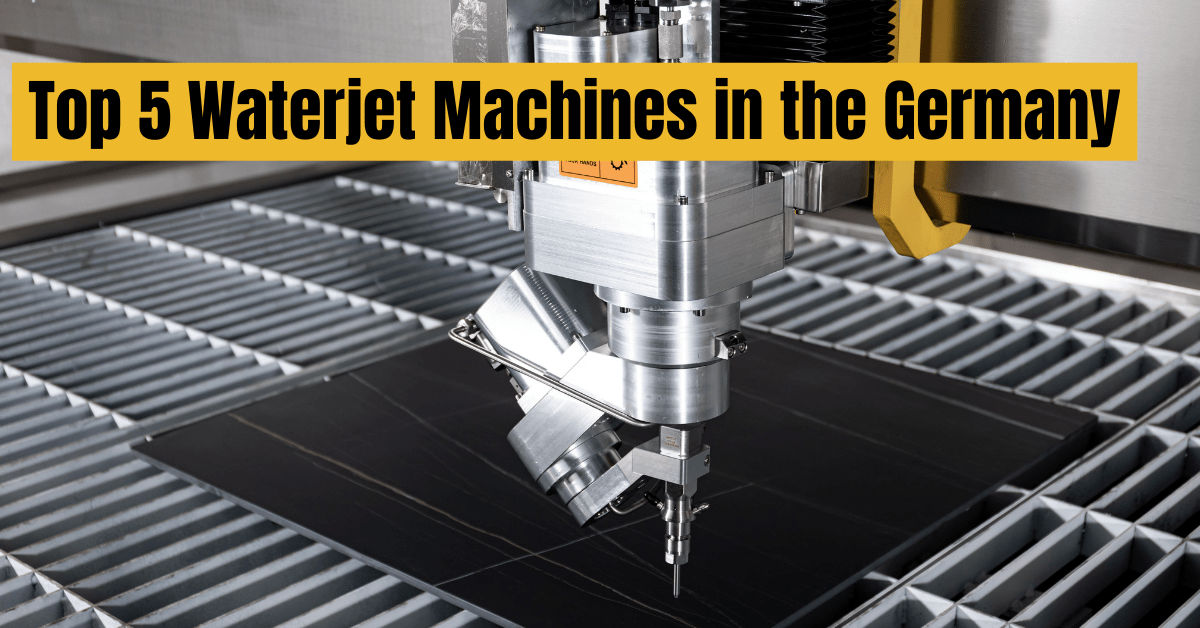As a technology that has been around for quite some time, waterjet cutting is frequently subjected to many myths, rumors, and misconceptions.
While waterjet cutting technology has made excellent strides in recent years, there are still misconceptions about this cutting process that prevent people from using it to its full potential.
In an effort to set the record straight, we’ve compiled a list of six of the most widespread waterjet cutting myths and debunked them.
You’ll find that learning the truth behind these myths and misconceptions can save you a lot of time, money, and unnecessary hassle.
6 Waterjet Cutting Myths And Misconceptions
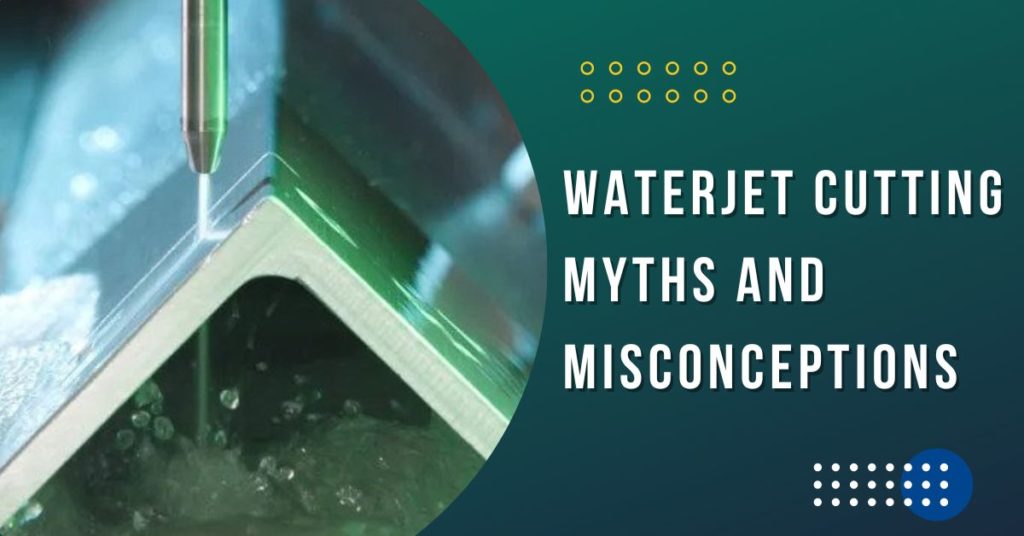
Here are six of the most commonly held misconceptions about water jet cutting, along with explanations as to why they’re wrong and what the truth really is.
Myth 1: Waterjet Cutting is an Expensive Process
A common misconception among new customers to the waterjet industry is that it’s an expensive process. Although this assumption may seem fair, it’s not entirely accurate.
The cost of waterjet cutting is high, but not so much that it is impossible to afford. The main costs involved are the abrasive material, electricity, water, and consumables parts.
The biggest cost here is the abrasives. Once you find a supplier with a good deal, your costs will be significantly reduced. Waterjet also offers excellent recycling capabilities that further reduce expenses.
Furthermore, waterjet cutting eliminates the need for finishing services, heat-affected zones, and waste disposal. It is also eco-friendly and versatile, making it a good investment for any business.
Myth 2: Waterjet Cutting Produces Loud Noise
The waterjet cutting machines used to be quite loud and had a well-earned reputation for making a lot of noise. But with modern technology and engineering, the latest generation of waterjet machines is much quieter if not silent.
The latest waterjet cutting systems come equipped with a function that allows the operator to raise and lower the water level in the tank.
Since the noise level depends on the distance between the material and the mixing tube, so when you cut materials under a thin layer of water, the noise level is reduced from 95 decibels to 75 decibels. It significantly improves the overall operation of the workshop with a safe noise level.
Myth 3: Waterjet Cutting is Limited to Aerospace Industry
The waterjet cutting process is used extensively in the aerospace and aviation industry. It allows engineers to produce precise, heat-free cuts with no margin of error.
However, this technology is not only limited to those industries. It can be used in almost every industry and has become one of the fastest-growing major machine tool processes in the world due to its versatility, ease of operation, and accuracy.
From food processing and automotive manufacturing to power generation and medical, there is an increasing number of industries that are using waterjet cutting technology to improve their production process.
Myth 4: Waterjet Cutting is a Slow Process
Many people believe that waterjet cutting is a slow process since all the action takes place underwater. However, this isn’t actually true.
A waterjet cutter can quickly cut through materials at high speeds (about 6 inches per minute) and complete the cutting of a workpiece in a single pass with excellent quality. The Waterjet cutting speed can also be enhanced by increasing the pressure and speed of the water jets.
Usually, the speed at which you cut a material depends on its hardness. Softer materials like plastics can be cut quickly, while harder materials like aluminum or stainless steel need to be cut slowly.
Myth 5: Waterjet Cutting is Only Good for Simple Flat Projects
The earliest waterjet machine models were designed to cut flat sheets of material. But with the development of more powerful machines and improved CAD integration, waterjet cutting can be used to cut any type of project at any level of complexity.
Today’s abrasive waterjet cutting systems are more versatile and sophisticated than those used in the past. They can cut more complex 3-D and cylindrical shapes than those achievable using traditional 2-D machining. Some machines are even equipped with 5-axis capabilities.
Waterjet machines have the ability to cut curves, straight cuts, internal holes, and lettering. Once done by hand, these tasks can now be completed in a fraction of the time by waterjet with exceptional precision and edge quality.
Myth 6: Waterjet Cannot Handle Materials That Absorb Water
When working with metals and alloys, you may notice that they are quite resistant to moisture. But when working with soft materials like wood, the opposite is true – it reacts rather negatively to wetness.
This is one of the main reasons why some people believe that waterjet cutting isn’t suitable for wood, but this is not true. The high velocity and pressure of the water stream are so powerful that it penetrates through the material at an incredibly fast rate and does not allow time for the wood to absorb it.
Furthermore, any professional waterjet cutter should be able to complete the job without any extra water getting into touch with the material being cut. Whereas plasma and laser cutting services struggle with wood due to its resilience and conductivity.
Conclusion
Waterjet cutting myths are rampant, and many seem believable. While the technology is being used in a number of industries, others have been slow to adopt it because of these myths and misconceptions.
Hopefully, this article has helped clear up some of the confusion surrounding waterjet cutting, and now you’ll be more likely to try this technology in your business if you are not already.
For any other kind of assistance related to waterjet cutting products or services, don’t hesitate to reach out to us at SAME Waterjet for help. You can also check out our website or give us a call.


